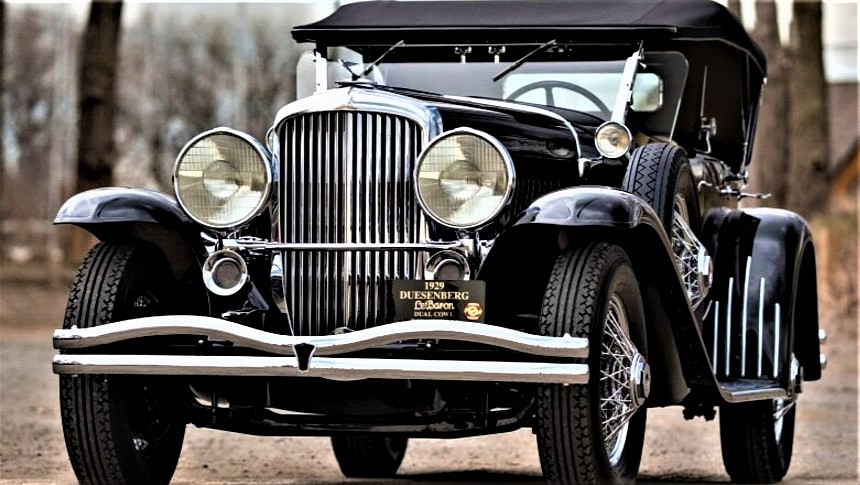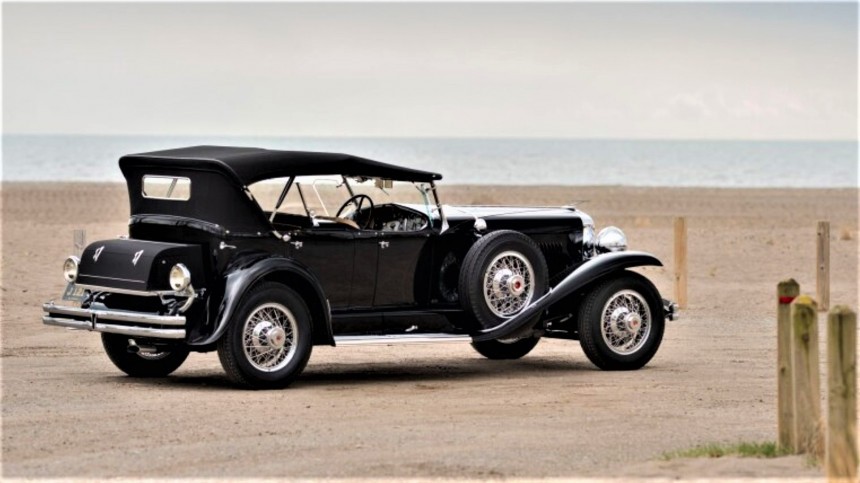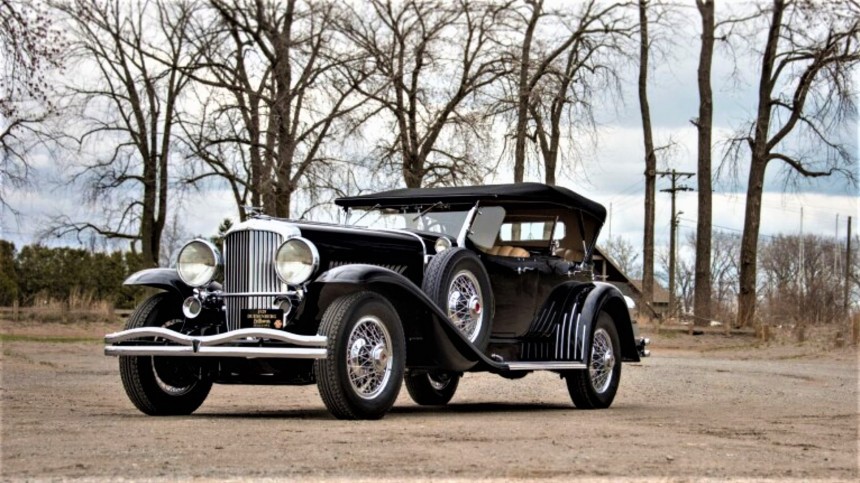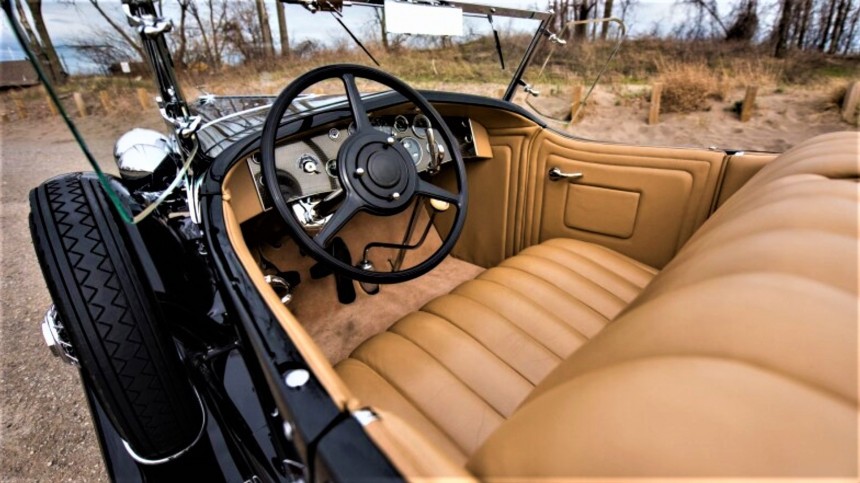The Duesenberg we see here had the privilege of changing hands and ending up with extremely wealthy individuals. We're talking about people who pioneered products you might have used at least once in your lifetime. Every Duesenberg Model J for sale has an interesting story to tell, and this one involves a rich lineage that can now be continued by anyone who can afford to spend millions on a 1930s car.
The 30s made way for many icons in the automotive world. Ford offered its luxurious yet practical Deluxe Model 40 range, Chrysler had the aerodynamic Airflow, and Cadillac produced monstrous V16 engine vehicles. Then there were the Duesenbergs – cars that didn't even try to market themselves in the same manner as their competitors. When Fred and Augie Duesenberg were tasked by Cord Automobile with building a vehicle that could beat the competition, they came up with the opulent Model J.
The thing is, none of the Duesenberg Model J for sale ads actually showed what the car could do, nor the car itself, for that matter. Instead of overtly showcasing the Model J, Duesenberg simply used posters depicting people with ostentatious lifestyles, accompanied by the words "he/she drives a Duesenberg." While its ads may seem like a bold, if not confusing, proposition for consumers at the time, the Model J wasn't exactly aimed toward the average buyer in the first place. Let's just say there's a good reason why many still consider it the best 30s American car.
The old saying "it's a Duesy" was often used whenever people described something special. That's because Duesenbergs were already remarkable automobiles performance-wise before they were even attached to the names of prestigious individuals. Every Duesenberg Model J engine comprised a straight 8-cylinder Lycoming, capable of generating upwards of 300 horsepower, which was unheard of at the time. Supercharged Model J variants could reach nearly 130 mph – an impressive feat when most cars on the road back then struggled to hit 100 mph.
Duesenberg's halo model was quite the engineering marvel as well, with unique features like a built-in altimeter (an instrument that measures altitude levels) usually found in aircraft. It also utilized a hydraulic brake system that functioned similarly to ABS – a feature not seen on commercial vehicles until many decades later. Of course, such innovations only bolstered the Duesenberg Model J's price tag, especially since it was sold during the Great Depression. Purchasing one in its heyday would translate to paying over $300,000 in today's money, making it an automobile only a select few could afford. Naturally, it attracted some wealthy clientele, one of which was the heir to the Wrigley chewing gum empire: Philip K. Wrigley. You heard that right; the Model J Convertible Coupe example seen here was originally bought by Wrigley himself in 1929.
About a year later, the chewing gum magnate decided to get his Model J's body swapped for a distinctive Lebaron Sweep Panel bodywork after accumulating 10,400 miles in it. The donor car used for the swap belonged to yet another renowned public figure, radio station pioneer and CBS executive H. Leslie Atlass. Wrigley held onto his Model J for another seven years before trading it back to the factory. Since then, the ol' Duesy switched hands multiple times, even ending up at a storage yard at one point, where it was sold for an equivalent of about $250 today.
After undergoing years of painstaking restoration work under its succeeding owners – most of whom were avid Duesenberg enthusiasts – the Model J was eventually brought back to its former glory. Such meticulous efforts even earned the coupe a spot in the June issue of Car Classics magazine in 1973, but its list of accolades didn't stop there. In 2004 and 2022, the same example was featured at Pebble Beach, winning Concours d'Elegance awards on both occasions.
It also won the Best Duesenberg award at the 2010 Auburn Cord Duesenberg Club National Reunion. Preserved with the exact shared parts previously owned by two prominent figures, this 30s car icon is now being offered at an auction for a whopping $2.9 million. While Wrigley's former prized possession might seem overpriced, keep in mind that past Duesenberg Model J's for sale were bought for much more. Certain examples were priced from anywhere between over $3 million to as much as $5.7 million.
In 2018, a sporty Duesenberg SJJ variant, owned by actor Gary Cooper, became the most expensive American car ever sold, at $22 million. It's not unusual for these autos to change ownership frequently either; in 2022, a similar '29 model that had 14 owners was still valued at $1.7 million.
Given the eight-figure implications that the Model J's price history suggests, this auction piece is starting to sound like a bargain at under $3 million. Only a few iconic 30s vehicles can still keep up with modern cars on the highway, like a Model J; even fewer people can brag about owning a former piece of corporate royalty. Before you hop into its listing, remember, you're paying for a Duesy, not a hooptie.
The thing is, none of the Duesenberg Model J for sale ads actually showed what the car could do, nor the car itself, for that matter. Instead of overtly showcasing the Model J, Duesenberg simply used posters depicting people with ostentatious lifestyles, accompanied by the words "he/she drives a Duesenberg." While its ads may seem like a bold, if not confusing, proposition for consumers at the time, the Model J wasn't exactly aimed toward the average buyer in the first place. Let's just say there's a good reason why many still consider it the best 30s American car.
The Duesenberg Model J's value is as good as its history
Duesenberg's halo model was quite the engineering marvel as well, with unique features like a built-in altimeter (an instrument that measures altitude levels) usually found in aircraft. It also utilized a hydraulic brake system that functioned similarly to ABS – a feature not seen on commercial vehicles until many decades later. Of course, such innovations only bolstered the Duesenberg Model J's price tag, especially since it was sold during the Great Depression. Purchasing one in its heyday would translate to paying over $300,000 in today's money, making it an automobile only a select few could afford. Naturally, it attracted some wealthy clientele, one of which was the heir to the Wrigley chewing gum empire: Philip K. Wrigley. You heard that right; the Model J Convertible Coupe example seen here was originally bought by Wrigley himself in 1929.
It's a Duesy, not a hooptie
After undergoing years of painstaking restoration work under its succeeding owners – most of whom were avid Duesenberg enthusiasts – the Model J was eventually brought back to its former glory. Such meticulous efforts even earned the coupe a spot in the June issue of Car Classics magazine in 1973, but its list of accolades didn't stop there. In 2004 and 2022, the same example was featured at Pebble Beach, winning Concours d'Elegance awards on both occasions.
In 2018, a sporty Duesenberg SJJ variant, owned by actor Gary Cooper, became the most expensive American car ever sold, at $22 million. It's not unusual for these autos to change ownership frequently either; in 2022, a similar '29 model that had 14 owners was still valued at $1.7 million.
Given the eight-figure implications that the Model J's price history suggests, this auction piece is starting to sound like a bargain at under $3 million. Only a few iconic 30s vehicles can still keep up with modern cars on the highway, like a Model J; even fewer people can brag about owning a former piece of corporate royalty. Before you hop into its listing, remember, you're paying for a Duesy, not a hooptie.




